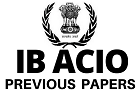sponsored links
- Rate of Inflation is measured basing on the changes in the WPI (Wholesale Price Index) in India.
- WPI is made available on weekly basis.
- WPI is calculated by the Economic Adviser, Government of India.
- Base year for calculation of WPI is now shifted to 2004-05 form 1993-94.
Types of Inflation

- Demand-Pull Inflation : Inflation is due to excessive aggregate demand i.e., Aggregate demand is greater than aggregate supply.
- Cost Push Inflation : It is the inflation due to raising cost of inputs.
- Wage-Push inflation
- Profit included inflation
- Heavy indirect taxation
- Increase in the costs of inputs and imported inputs such as raw-materials, fuel etc.
- Mixed inflation : Schultz i.e., both demand-pull and cost push factors
- Stagflation : A sustained increase in price-level and rising unemployment
- India experienced stagflation in 1991-94
- Hyper-Inflation or Galloping inflation : It is the most extreme inflation phenomenon, in this position money looses all its value. This occurred in Germany in the year 1926 and at present in Zimbabwe.
- In India, only during the 1st plan period, the general price level recorded a fall.
- Highest inflation in India is in 1974-75 - 25.2%
Causes of Inflation (General)
- Rapid growth of Population : There has been a continuous and big increase in population since 1951 from 36.1 crore to 84.6 crore in 1991 to above 100 crore now. As a result of this, the demand for basic essential goods has gone up, thus contributing to price rise.
- Increase in incomes : Increase in incomes of sizeable part of population added to the demand for goods. This accompanied by corresponding increase in prices of consumer goods, raised the price level further.
- Rising government expenditure : The rising government expenditure or non-development works has increased the money receipts without increasing the supply of consumer goods. This results in rising prices.
- Deficit financing : GOI frequently use deficit financing to bridge the gap between public revenue and public expenditure but a large dose during slow growth turns out to be inflationary.
- Increase in money supply : An increase in the money supply which exceeds the genuine expanding needs of the community leads to higher monetisation of the needs such as transactions. This is due to higher money availability with the public.
- Inadequate agricultural output : This has resulted in supply not meeting demand. Several essential commodities as well as industrial raw materials are agriculture based. A short agricultural output fails to meet the demands, thus increasing the price.
- Inadequate industrial production : Inadequate production especially of consumer products and important agricultural and industrial inputs has resulted in demand being not met thus increasing the price.
- Speculative stocks : The environment of rising prices results in withholding of supplies at several points by the speculative traders and producers who hoard goods in order to sell later at higher prices. This activity results in supply not meeting demand.
- High priced imports : The import of various essential commodities like petroleum, oil and lubricants, fertilizers and chemical products and food grains is done at very high prices. This increases their prices and since these products are used in various sectors such as transport, agriculture etc., the price of these services also increases.
- Other factors : Other factors which leads to the price increments are the income-tax laws, inability of dealing with tax evasion, indirect taxes, black marketing etc.
sponsored links










 English Vocabulary from
English Vocabulary from











0 Responses:
Post a Comment